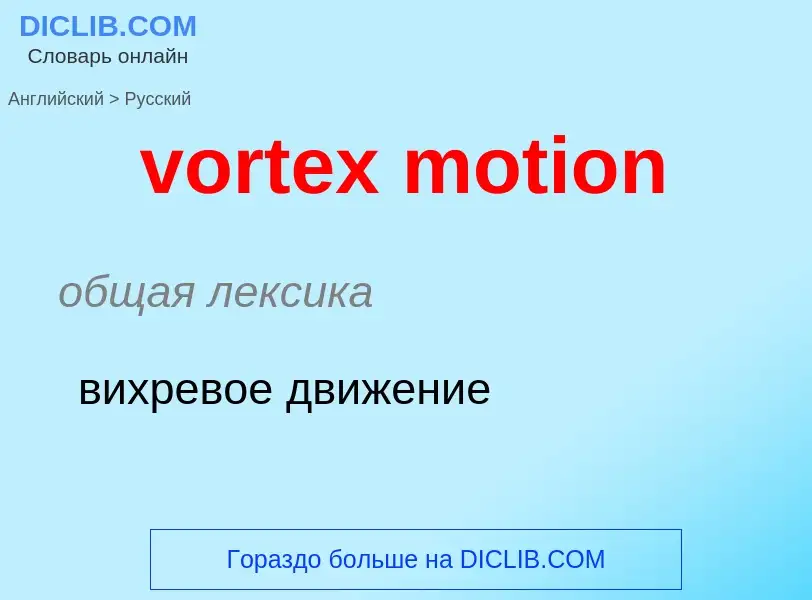Vertaling en analyse van woorden door kunstmatige intelligentie
Op deze pagina kunt u een gedetailleerde analyse krijgen van een woord of zin, geproduceerd met behulp van de beste kunstmatige intelligentietechnologie tot nu toe:
- hoe het woord wordt gebruikt
- gebruiksfrequentie
- het wordt vaker gebruikt in mondelinge of schriftelijke toespraken
- opties voor woordvertaling
- Gebruiksvoorbeelden (meerdere zinnen met vertaling)
- etymologie
vortex motion - vertaling naar russisch
общая лексика
вихревое движение
физика
абсолютный вихрь скорости
Definitie
1) Соотносящийся по знач. с сущ.: кукла (1*1), связанный с ним.
2) а) Свойственный кукле (1*1), характерный для нее.
б) перен. разг. Невыразительный, безжизненный.
3) перен. разг. Маленький - меньше обычного - нормального размера.
Wikipedia
In continuum mechanics, vorticity is a pseudovector field that describes the local spinning motion of a continuum near some point (the tendency of something to rotate), as would be seen by an observer located at that point and traveling along with the flow. It is an important quantity in the dynamical theory of fluids and provides a convenient framework for understanding a variety of complex flow phenomena, such as the formation and motion of vortex rings.
Mathematically, the vorticity is the curl of the flow velocity :
where is the nabla operator. Conceptually, could be determined by marking parts of a continuum in a small neighborhood of the point in question, and watching their relative displacements as they move along the flow. The vorticity would be twice the mean angular velocity vector of those particles relative to their center of mass, oriented according to the right-hand rule.
In a two-dimensional flow, is always perpendicular to the plane of the flow, and can therefore be considered a scalar field.










